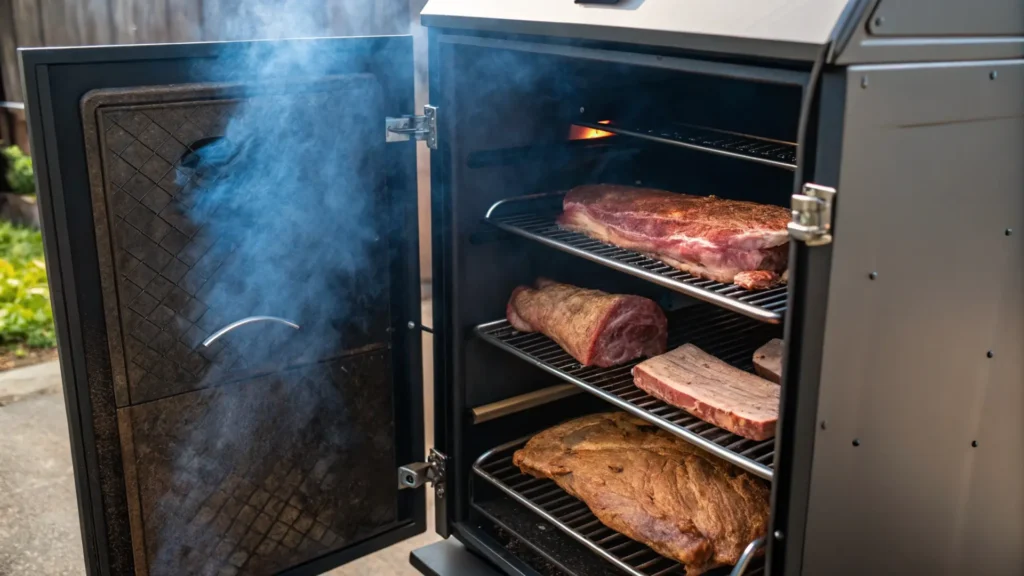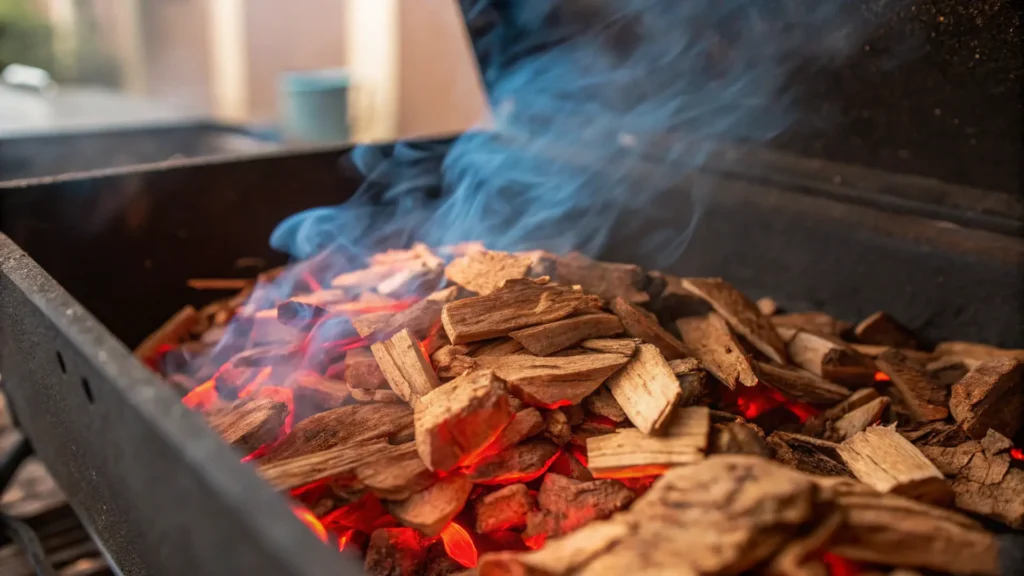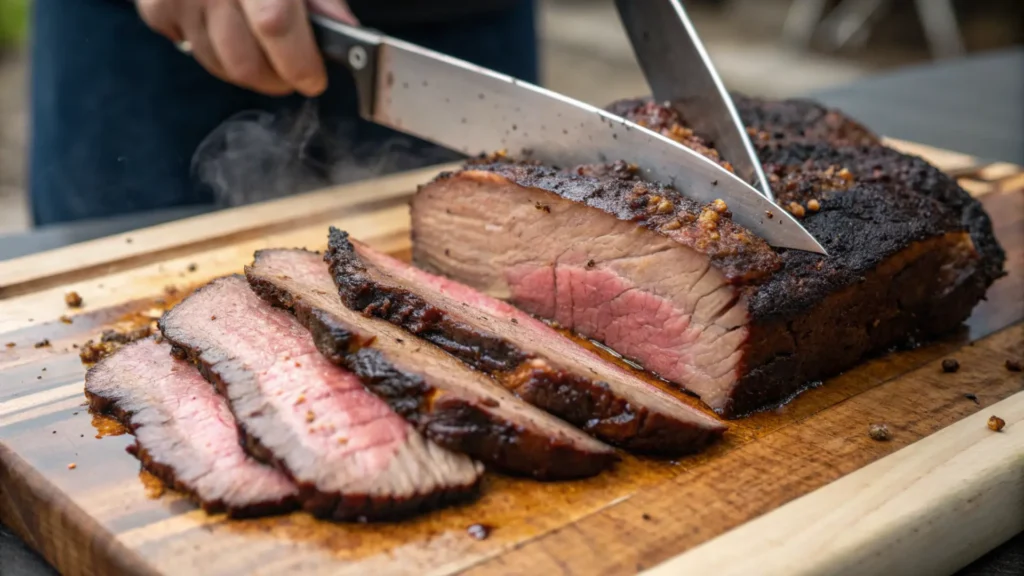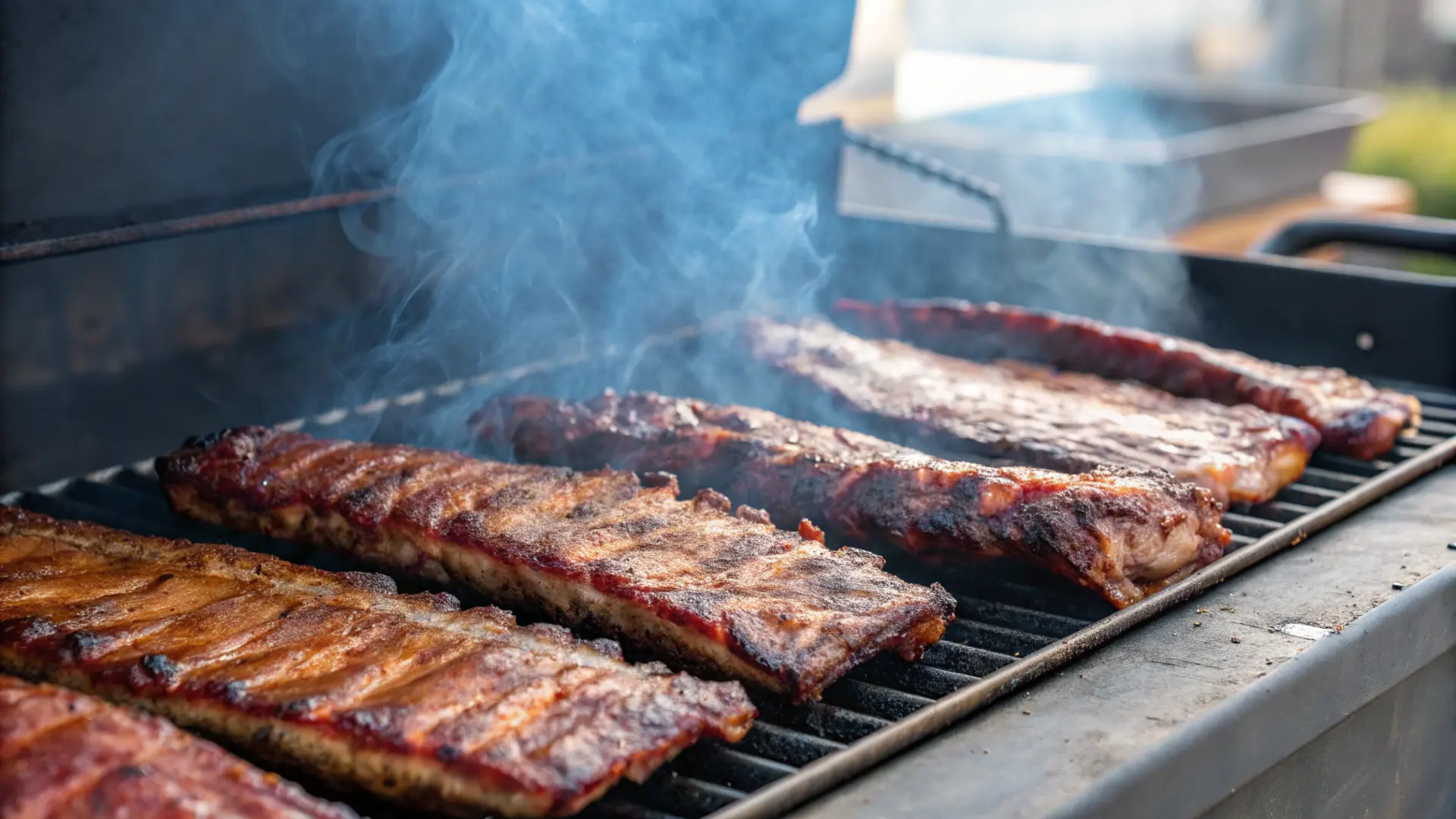Smoking meat is an age-old technique that infuses rich, smoky flavors into your favorite cuts of meat. But achieving that perfect bark, juicy texture, and deep flavor requires more than just tossing wood chips into a smoker. In this guide, we’ll explore essential BBQ smoking tips to help you get the most out of your smoker.
One of the most important BBQ smoking tips is to always monitor the temperature carefully throughout the process. Using a digital thermometer can make a huge difference in your results.
Looking to level up your BBQ skills? Check out these expert BBQ tips for more insights!
Table of Contents
Understanding the 4-Hour Rule – BBQ Smoking Tips for Safe Cooking
What is the 4-Hour Rule for BBQ Smoking?
The 4-hour rule is a food safety guideline that ensures meat remains safe to eat during the smoking process. According to the USDA, meat should reach a temperature of at least 140°F within 4 hours to prevent bacterial growth.
Why the 4-Hour Rule Matters for BBQ Smoking
- Bacteria such as Salmonella and Clostridium perfringens thrive in the “danger zone” between 40°F and 140°F.
- Allowing meat to stay in this zone for too long increases the risk of foodborne illnesses.
How to Follow the 4-Hour Rule When Smoking Meat
- Use a reliable meat thermometer to monitor internal temperature.
- Maintain smoker temperature between 225°F and 250°F for consistent cooking.
- If the meat doesn’t reach 140°F within 4 hours, it’s safer to discard it.
Managing Smoker Vents – Pro BBQ Smoking Tips for Perfect Results

Why Smoker Vents Matter for BBQ Smoking
Smoker vents control the flow of oxygen and smoke, which affects the temperature and flavor of the meat. There are usually two types of vents:
- Intake Vents – Control the flow of oxygen into the smoker.
- Exhaust Vents – Allow smoke and heat to escape.
When to Keep Vents Open While Smoking Meat
- Keep both intake and exhaust vents partially open to allow proper airflow and maintain consistent temperatures.
- Opening vents helps increase temperature and promote better smoke circulation.
When to Close Vents During BBQ Smoking
- Close intake vents slightly if the temperature gets too high.
- Never fully close the exhaust vent, as it can cause creosote buildup and give the meat a bitter taste.
Troubleshooting BBQ Smoking Issues – Expert Tips Included
Why Your BBQ Smoker is Producing Too Much Smoke
- Using green wood or wood with high moisture content.
- Insufficient airflow due to closed or blocked vents.
- Overloading the smoker with wood chips or chunks.
Discover more about managing smoker vents and fixing smoke issues in this detailed BBQ guide.
How to Fix Excess Smoke When BBQ Smoking
- Use properly seasoned, dry wood.
- Open vents to increase airflow and burn off excess smoke.
- Remove some wood chips or chunks if the smoke is too thick.
Secrets to Successful BBQ Smoking – Advanced BBQ Smoking Tips

Choosing the Right Wood for BBQ Smoking
Different woods impart different flavors:
| Wood Type | Flavor Profile | Best For |
|---|---|---|
| Hickory | Strong, smoky, bacon-like | Pork, ribs, brisket |
| Mesquite | Bold and earthy | Beef, lamb |
| Apple | Sweet and mild | Pork, chicken |
| Cherry | Sweet and slightly tart | Poultry, pork |
Maintaining Consistent Temperature While Smoking
- Invest in a high-quality thermometer.
- Keep the lid closed as much as possible to maintain heat and smoke levels.
Wrapping Meat for Better BBQ Smoking Results
- Use the Texas crutch by wrapping meat in foil or butcher paper after it reaches 150°F.
- This helps lock in moisture and speed up cooking without sacrificing the smoke ring.
For creative seasoning and unique flavor combinations, explore these delicious Chex cereal recipe tips.
Preparing Meat for BBQ Smoking
Trimming and Seasoning Tips
- Remove excess fat to allow better smoke penetration.
- Use a balanced rub of salt, pepper, garlic powder, and paprika for a rich flavor profile.
These BBQ smoking tips are especially helpful if you’re preparing meat for a big family gathering or competitive cookout.
Marinating and Brining for Better Results
- Marinate tough cuts overnight to enhance tenderness and flavor.
- Brining helps meat retain moisture during the smoking process.
For a comforting BBQ-inspired meal, try this rich and savory Italian Sausage Pasta Bake.
Monitoring Temperature and Smoke Levels for BBQ Smoking
Ideal Smoking Temperatures for BBQ
- Low and slow cooking is key: maintain between 225°F and 250°F.
- Monitor both meat and smoker temperatures regularly.
Creating Thin Blue Smoke for Flavorful BBQ
- Thick white smoke can result in a bitter taste.
- Aim for thin, blue smoke for clean and flavorful results.
Resting & Slicing – Final BBQ Smoking Tips for Tender Meat

Why Resting is Crucial for BBQ Smoking
- Let smoked meat rest for at least 20-30 minutes to allow juices to redistribute.
- Resting enhances flavor and moisture retention.
How to Slice Smoked Meat for Best BBQ Results
- Slice against the grain to ensure tenderness.
- Use a sharp knife for clean cuts.
Smoked meats make an excellent addition to breakfast dishes. Try some creative ideas in Rihana’s Breakfast Recipes.
Using a Water Pan for Better BBQ Smoking
Why a Water Pan Improves BBQ Smoking Results
- Maintains moisture inside the smoker.
- Helps regulate and stabilize temperature.
How to Use a Water Pan While Smoking Meat
- Fill the pan with hot water and place it near the heat source.
- Refill as needed to prevent drying out.
Cleaning and Maintaining Your Smoker for Better BBQ
Regular Cleaning Routine for BBQ Smokers
- Clean grates after every use to prevent residue buildup.
- Remove ash and grease from the smoker box regularly.
Another often overlooked area in BBQ smoking tips is cleaning and maintaining your smoker. A well-maintained smoker ensures even heat distribution and consistent smoke flavor.
Long-Term Maintenance Tips for Smokers
- Check for rust and replace damaged parts.
- Oil grates to prevent sticking and corrosion.
FAQs
What is the 4-hour rule for smoking meat?
The 4-hour rule states that meat must reach an internal temperature of 140°F within 4 hours to avoid bacterial growth.
Should vents be open or closed when smoking?
Vents should generally be left partially open to maintain proper airflow and prevent creosote buildup.
What to do when the barbecue is smoking too much?
Use dry wood, open the vents, and avoid overloading the smoker with wood chips.
What are the secrets to smoking meat?
Use the right wood, maintain a consistent temperature, wrap for tenderness, and rest the meat before slicing.
Conclusion
Mastering BBQ smoking takes time and practice, but these BBQ smoking tips will get you closer to that smoky perfection. Keep experimenting, keep learning, and check out more BBQ smoking tips and recipes on Rihana Recipes to elevate your barbecue game to the next level.
For more advanced BBQ smoking techniques, check out this comprehensive smoking guide from the pros.

